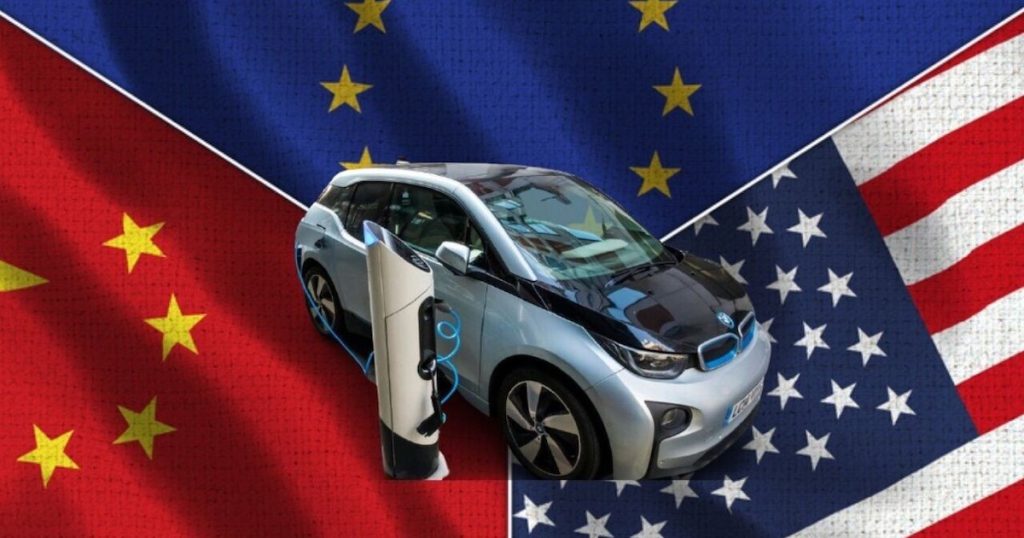
Given the impacts of man-made climate change, most developed countries have been putting in place policies to encourage vehicle owners to transition from Internal Combustion Engine (ICE) vehicles to electric vehicles (EVs).
Singapore is no different. The government has introduced a tax rebate to reduce the costs of buying EVs in Singapore, and it is also attempting to build the country’s necessary EV infrastructure. Incentives are being offered for private developers to install charging stations in Singapore, and new residential districts will have EV infrastructure built in as part of the project.
The benefits of EVs are numerous. They emit less greenhouse gasses by a huge margin, are less susceptible to wear and tear due to them having fewer moving parts and regenerative braking, among others.
But as a whole, EVs are not the standard vehicle of choice for most drivers. There are a few exceptions, but by and large, the vehicles that are on the road remain mostly ICE vehicles.
This begs the question of why EVs have not yet taken over the market, given their superiority, and what Singapore can learn from existing policies that are already rolled out elsewhere.
The first metric: Price
To answer that question, it is necessary to understand what matters to consumers.
The most obvious factor is price. EVs are expensive to buy, and are big-ticket items for most people. Most EVs are in the same price range as a luxury car, and so, consumers who are mostly just interested in owning a vehicle for transportation do not feel the need to purchase an EV.
Instead, because ICE vehicles do the job ‘well enough’, these consumers are satisfied. The price of an EV simply does not become a factor significant enough to consider — this is where government policy comes in.
Across the board, the one policy that has been tried in all EV encouragement schemes is to incentivise the purchase of EVs.

US’ policy thus far has been exactly that. The government offers tax rebates on both EV manufacturing and EV purchases, but the result has been less than ideal.
While EV ownership is on the rise, EV sales make up only five per cent of US light vehicle sales and are only expected to comprise about nine per cent of all vehicles in 2025.
In contrast, vehicle sales in some European cities are in the 50 to 60 per cent range. Clearly, there is a missing piece in US’ EV adoption policy that is being addressed in Europe. And given that we have been looking at purchases of EVs as our yardstick, this other factor also has something to do with consumer behaviour, particularly utility.
The second metric: Utility and convenience

Demand only arises from a consumers’ willingness and ability to pay for the good, and a consumer’s willingness to pay derives from the utility that they would obtain from the consumption of the good.
The same rule applies to an EV. If there is nothing to be gained from having an EV, or if consumers only obtain a small amount of utility from an EV, there just will not be many consumers.
What rebates and tax incentives do is reduce the amount necessary to purchase an EV. What such incentives cannot do however, is to provide utility for the EV.
For that, we must turn to infrastructure. Charging infrastructure is sorely lacking in the US. There are roads between major cities that cannot be traversed by an EV simply because of a lack of charging stations. This is the core of the ‘charging problem’ in the US that their EV policy has failed to deal with.

Furthermore, there are several different charging plugs in the US, almost all of which are mutually incompatible. Tesla, Chevrolet, and other brands have their own charging stations that are designed to be exclusive — only EVs with the right port can charge at these stations.
While Tesla has indicated that it is willing to open its charging stations to other EV users, its pitch to the government for funding also comes with a catch. Tesla will use government funds to build charging stations useable by all EVs, but some of it will also be used to build charging stations that can only be used by Tesla customers.
The result is that each company is independently constructing their own network of charging stations that cannot serve much more than their own customers. Not only is this redundant, but it also means that more space is taken up for EV stations without necessarily increasing convenience, and therefore utility, for EV users.
This would explain why EV sales are slow in the US despite having a huge market. Consumers not only have to consider which vehicle is best for their purposes, but also which company has the best infrastructure to support EV use.
In stark contrast, the European Union (EU) has mandated that all public charging stations use the Combined Charging System (CCS) plug. This policy means that EV owners who do not own an EV compatible with the CCS plug will not be able to charge at these stations, and therefore, EVs with the CCS plug are the only ones who benefit from both the added convenience of charging stations as well as the rebate.
To demonstrate the effectiveness of such a policy, Tesla actually shifted their manufacturing to ensure their EVs in Europe were compatible with the CCS plug, and released an adapter for Teslas already sold in Europe that were not compatible. So is EV adoption mostly dependent on having the right infrastructure to make EVs worth buying? Not exactly.

EV adoption varies across the EU, in which some cities have far higher EV adoption rates than others.
According to a report by the International Council for Clean Transportation, national and local one-time purchase subsidies and annual national tax breaks on vehicle registration and operation are common where electric shares are high, such as in Amsterdam, Oslo, and The Hague.
In contrast, markets that have largely not addressed cost barriers on car purchase or annual ownership tax (such as Brussels, Hamburg and Madrid) typically see slower electric uptake.
The key takeaway from the comparison between these two case studies is that EV incentives that make EV production and purchasing cheaper must be combined with policies that actually increase the utility of having an EV — that is, EV owners must not be artificially restricted in their journeys by a lack of infrastructure.
Independently, the policies do induce a rise in EV ownership, but for their true potential to be unlocked, they must be combined to create something more.
What lessons can we draw from China?
Finally, let us turn our attention to China. China has taken a slightly different approach to EV adoption, partially because one goal of transportation policy in China is to control the number of vehicles on the road.
As such, while Europe and the US have focused on using the carrot, China has a dual focus on both the carrot and the stick.
Chinese EV policy provides subsidies for EV production and EV purchases, but at the same time, the government also punishes the production of ICE vehicles.
Ever since 2020, 10 per cent of all vehicles produced by manufacturers must be EVs, and performance is measured by a credit score. Companies that fail to meet the requirements must either pay a fine, or purchase credits from other companies.
This cap and trade policy, combined with initiatives by several megacities to reduce the number of ICE vehicle registration plates and increase the number of EV registration plates, has meant that EV adoption in China is incredibly high.
EVs are projected to take up 50 per cent of the automobile market share in 2025, and the goal for the Chinese government is for 40 per cent of all new automobiles in China to be EVs by 2030.

These policies were implemented in addition to the already high level of support that the government has for EV infrastructure. In fact, China recently claimed the title of having the largest EV charging network in the world.
The China case study therefore demonstrates that while investment in infrastructure and offering tax incentives for EVs is helpful, these policies still can be improved on. The carrot may be one half of the equation and enough to incentivise some, but to bring the entire country on board, the stick sometimes proves to be a helpful instrument.
So what can Singapore learn from them?
What does all this mean for Singapore? Well, several things.
Firstly, simply incentivising EV production and EV purchases will not be sufficient. Singapore’s goals for EV adoption are similar to China’s.
In Singapore, there is a limited amount of space on the road, and as a small country, this issue is particularly pressing. What we need is for EVs to replace ICE vehicles, rather than simply having more EVs on the road.
After all, an EV takes up the same amount of space on the road. Given the traffic conditions during peak hours, I’m sure none of us are too keen on having even greater delays from traffic jams.
To that extent, policymakers can draw from China’s experience in using both the carrot and the stick. A policy such as preferential granting of Certificates of Entitlement (COEs) to those who intend to purchase EVs, higher costs for ICE vehicle COEs, and better public transport would help increase EV adoption.
Secondly, an effective policy package would include standardisation, rather than simply incentivising EV purchases across the board.
As clearly demonstrated from the case studies, the EV transition will be greatly aided by government-mandated standardisation — this is currently not in place.
At the same time, it would be wise to understand the reasons for the policy’s role in the US and EU. These regions are large, and it is not uncommon for road users to take long-distance trips that would require charging along the way.

Singapore however, has no such need. Being a small country, most trips would likely be within the range of a fully-charged EV, but overseas travel to Malaysia would not.
Currently, Malaysia has introduced incentives for installation of private charging stations, but there are no incentives for public charging stations. For now, public charging stations are installed in collaboration with private automobile companies, which could result in the same problems currently seen in the US.
However, this system is still in its infancy, and it is not too late for the government to mandate standardisation without astronomically high costs.
A joint government standardisation policy would likely aid travel to and from Malaysia, especially once the Covid-19 pandemic is over. In the meantime, charging port standardisation would be helpful, but not a keystone policy.
Nevertheless, it would be wise to adopt a policy that avoids the creation of multiple redundant charging networks around the country, especially considering the restrictions that are naturally present due to our small size.
Singapore is on the right track when it comes to EVs — the government is offering subsidies and building EV infrastructure, but there is definitely more that can be done.
Current efforts are insufficient, and goals will not be accomplished without significant cost. This only means that it is time to reexamine our efforts, and redouble them with the benefit of hindsight.
Singapore has always been a leader in environmental efforts in the region, and the EV transition is our latest test. This is not an insurmountable obstacle though, and with the right policies in place, it is possible for Singapore to emulate the successes of other countries and avoid their pitfalls. We have, after all, done this before.
Featured Image Credit: The Next Web










